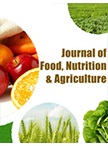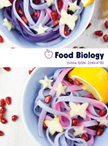The effect of rearing system and cooking method on the carnosine and anserine content of poultry and game meat
DOI:
https://doi.org/10.21839/jfna.2018.v1i1.216Keywords:
Chicken, Pheasant, Carnosine, Anserine, CookingAbstract
Poultry meat has been shown to be a rich source of carnosine and anserine (CRC) but little is known of the effects of bird species and the system under which it is reared have on the concentrations of CRC. Retail samples of breast meat from conventional chicken, free range chicken and pheasant, and breast meat from wild caught pheasant were procured and subjected to five different cooking methods: frying, grilling, boiling, microwaving and roasting. CRC were greater in uncooked pheasant than chicken (P< 0.05) and greater in free range than conventionally reared chicken (P<0.05). There were no differences in CRC between retail and wild caught pheasant. Cooking method affected CRC content; boiling and microwaving resulted in lower CRC contents than grilling, roasting or frying (P < 0.05). Pheasant is a richer source of CRC than conventionally reared chicken, although free range chicken produces meat of similar CRC content to pheasant.
Downloads
References
Abe, H. (2000). Role of histidine-related compounds as intracellular proton buffering constituents in vertebrate muscle. Biochemistry (Moscow), 65, 891-900.
Amend, J.F., Strumeyer, D.H., and Fisher, H. (1979). Effect of dietary histidine on tissue concentrations of histidine containing dipeptides in adult cockerels. Journal of Nutrition, 109, 1779-1786.
Bauchart, C., Remond, D., Chambon, C., PatureauMirand, P., Savary-Auzeloux, I., Reynes, C., and Morzel, M. (2006). Small peptides (<5kDa) found in ready-to-eat beef meat. Meat Science, 74, 658-666.
Boldyrev, A., Koldobski, A., Kurella, E., Maltseva, V., and Stvolinski, S. (1993). Natural histidine-containing dipeptide carnosine as a potential hydrophilic antioxidant with membrane stabilising function. A biomedical aspect. Molecular and Chemical Neuropathology, 94, 237-240.
Chan, W., Decker, E., Chow, C., and Boissonneault, G. (1994). Effect of dietary carnosine on plasma tissue antioxidant concentrations and on lipid oxidation in rat skeletal muscle. Lipids, 29, 461-466.
Davey, C.L. (1960). The significance of carnosine and anserine in striated skeletal muscle. Archives of Biochemistry and Biophysics, 89, 303-308.
Dunnett, N., Harris, R.C., Soliman, M.Z., and Suwar, A.A. (1997). Carnosine, anserine and taurine contents in individual fibres from the middle gluteal muscle of the camel. Research in Veterinary Science, 62, 213-216.
Geissler, S., Zwarg, M., Knutter, I., Markwardt, F., and Brandsch, M. (2010). The bioactive dipeptide anserine is transported by human proton-coupled peptide transporters. The FEBS Journal, 277, 790–795.
Harris, R.C., Marlin, D.J., Dunnett, M., Snow, D.H., and Hultman, E. (1990). Muscle buffering capacity and dipeptide content in the thoroughbred horse, greyhound dog and man. Journal of Comparative Physiology, 97, 249-251.
Harris, R.C., Dunnett, M., and Greenhaf, P. (1998). Carnosine and taurine contents in individual fibres of human vastus lateralis muscle. Journal of Sports Science, 16, 639-643.
Harris, R.C., Wise, J.A., Price, K.A., Kim, H.J., Kim, C.K., and Sale, C. (2012). Determinants of muscle carnosine content. Amino Acids, 43, 5-12.
Hipkiss, A.R., Preston, J.E., Himsworth, D.T., Keown, M., Michaelis, J., Lawrence, J., Mateen, A., Allende, L., Eagles, P.A., and Abbot, N.J. (1998). Pluripotent protective effects of carnosine a naturally occurring dipeptide. Annals of the New York Academy of Sciences, 854, 37-53.
Kohen, R., Yamamoto, Y., Cundy, K., and Ames, B. (1988). Antioxidant activity of carnosine, homocarnosine and anserine present in muscles and brain. Proceedings of the National Academy of Science U.S.A, 85, 3175-3179.
Kubomara, D., Matahira, Y., Masui, A., and Matsuda, H. (2009). Intestinal absorption and blood clearance of L-histidine-related compounds after ingestion of anserine in humans and comparison to anserine-containing diets. Journal of Agricultural and Food Chemistry, 57, 1781–1785.
Lukasiewicz, M., Kucynska, B., Kamaszewski, M., and Niemiec, J. (2015). Beta-alanine as a factor influencing the content of bioactive peptides in muscles of Hubbard Flex chickens. Journal of the Science of Food and Agriculture, 95, 2562-2565.
Nielsen, C.U., Supuran, C.T., Scozzafava, A., Frokiaer, S., Steffansen, B., and Brodin, B. (2002). Transport characteristics of L-carnosine and the anti-cancer derivative 4-toluenes ulfonylureido-carnosine in human epithelial cell line. Pharmaceutical Research, 19, 1337-1344.
Park, Y.J., Volpe, S.L., and Decker, E.A. (2005). Quantification of carnosine in human’s plasma after dietary consumption of beef. Journal of Agricultural Food Chemistry, 53, 4736-4739.
Park, S.W., Kim, C.H., Namgung, N., Jung, B.Y., Paik, I.K., and Kil, D.Y. (2013). Effects of dietary supplementation of histidine, beta-alanine, magnesium oxide, and blood meal on carnosine and anserine concentrations of broiler breast meat. Journal of Poultry Science, 50, 251-256.
Peiretti, P.G., Medana, C., Visentin, S., Giancotti, V., Zunino, V., and Maineri, G. (2011). Determination of carnosine, anserine, homocarnosine, pentosidine and thiobabituric acid reactive substances contents in meat from different animal species. Food Chemistry, 126, 1939-1947.
Peiretti, P.G., Medana, C., Visentin, S., Bello, F., and Meinen, G. (2012). Effect of cooking method on carnosine and its homologues, pentosidine and thiobarbituric acid-reactive substance contents in beef and turkey meat. Food Chemistry, 132, 80-85.
Plowman, J.E., and Close, E.A. (1988). An evaluation of a method to differentiate the species of origin of meats on the basis of the contents of anserine, balenine and carnosine in skeletal muscle. Journal of the Science of Food and Agriculture, 45, 69-78.
Purchas, R., Rutherford, S., Pearce, P., Vather, R., and Wilkinson, B. (2004). Concentrations in beef and lamb of taurine, carnosine, co-enzyme Q10 and creatine. Meat Science, 66, 629-637.
Quinn, P.J., Boldyrev, A.A., and Formazuyk, V.E. (1992). Carnosine: its properties, functions and potential therapeutic applications. Molecular Aspects of Medicine, 13, 379-444.
Rymer, C. (2012). A study to determine the differences in ?-alanine dipeptide contents of various samples of retail meat. University of Reading Report.
Sewell, D.A., Harris, R.C., Marlin, D.J., and Dunnett, M. (1992). Estimation of the carnosine content of different fibre types in the middle gluteal muscle of the thoroughbred horse. Journal of Physiology, 455, 447-453.
Straková, E., Suchý, P., Vitula, F., and Ve?erek, V. (2006). Differences in the amino acid composition of muscles from pheasants and broiler chickens. ArchivTierzucht, 49, 508-514.
Stvolinski, S.L., Dobrota, D., Mezeshova, V., Liptai, T., Pronaiova, N., Zalibera, L., and Boldyrev, A.A. (1992). Carnosine and anserine in active muscle – a proton NMR spectroscopic study. Biochemistry (Moscow), 57, 909-914.
Wolf, W.A., and Wilson, D.W. (1935). Carnosine and anserine in mammalian skeletal muscle. The Journal of Biological Chemistry, 109, 565-571.






 .
.